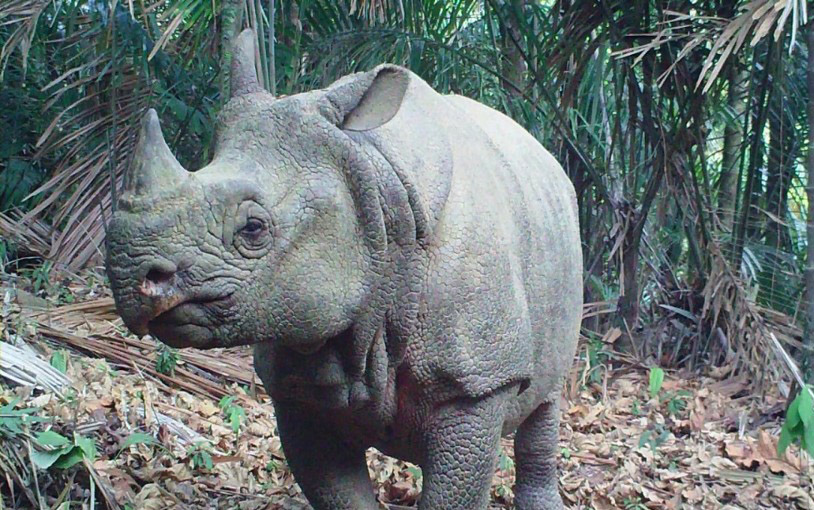

The average mass of rhinos vary by species and sex. They will have to be closely guarded for a long time. Even if reproduction is successful, population numbers will be incredibly low for a long time. Scientific innovation is now the only way to save these sub-species. In 2021, researchers aim to implant embryos in both to try to get them to reproduce. Scientists are investigating ways to continue reproduction from the last females, including stem cell treatment and hybrid embryos from Northern White Rhino eggs and Southern White Rhino sperm. Both are guarded in a semi-wild enclosure, and have had their horns sawed off to deter poachers. There are now only two female rhinos left: Najin and her daughter, Fatu.

Sudan, the last remaining male died in Kenya in 2018. Intense poaching, and challenges for protection during civil unrest in stronghold countries, has led to a rapid decline. In 1960, it’s estimated there were more than 2,000, predominantly in Sudan and the Democratic Republic of Congo. In the chart we see its demise over the second-half of the 20th century. The Northern White Rhino is on the brink of extinction. If the story of the Southern White Rhino is one of our greatest successes, the story of its Northern cousin must be one of our biggest failures. You can explore population estimates by country in the chart. South Africa is home to around three-quarters of Southern White Rhinos. Over the last few years, increases in poaching rates have unfortunately led to another decline. Populations were restored to more than 21,000. Over the course of the 20th century, severe protection of these species – particularly in African nature reserves – led to a significant and rapid increase. All were in the Hluhluwe–iMfolozi Park in South Africa – now a nature reserve. However, intense poaching by the Europeans and killings in the conversion of land for agriculture meant that by the late 19th century it was close to extinction. 3 We don’t have precise estimates but it’s reported that by the mid-19th century it was still abundant. It’s touted as one of the world’s greatest conservation success stories. In the chart we see the population trend of the Southern White Rhino. A century ago, the Northern was much more abundant than the Southern. There are two main subspecies: the Northern White and Southern White rhino. A.Overall, the story of the White rhino is a positive one. Rhinoceros hybrids > With the influx of Europeans into Asia during the 19th century, the pressure on rhinos from hunting greatly increased. Please do what you can to protect these rare, beautiful and precious animals. The hides of these animals, too, were once used there in the manufacture of armor. In China, where it is widely believed that rhinoceros horn has healing properties, a single kilogram of horn can bring as much as $30,000 on the black market. And the Chinese demand for their horns for medical purposes keeps the pressure on. Loss of habitat, especially during the Vietnam War, has also led to their decimation. There are no Javan rhinoceroses in captivity, and the birthrate of wild Javan rhino babies is down to only a couple of calves a year.ĭutch hunter with dead Javan rhinoceros (Ujung Kulon, 1895)įormerly hunting, and now poaching, have been the primary cause of the Javan rhino's sad decline. A second population in Vietnam is now thought to be extinct. But now it's critically endangered, perhaps the rarest large mammal on earth, with the Ujung Kulon herd being the single known population in the wild. It lived on the islands of Java and Sumatra, throughout Southeast Asia, and was even found in India and China. "Now we just need to ensure their protection."Īt one time the Javan Rhinoceros ( Rhinoceros sondaicus), also known as the Sunda Rhinoceros, was the most common rhinoceros in Asia. "This is wonderful news," Widodo Ramono, head of conservation group the Indonesian Rhino Foundation, told AFP news agency. All reside in Ujung Kulon, which lies on the extreme western tip of Java (see map right). The total number of surviving animals worldwide is now 60.

The three are two more than the number of Javan rhino babies spotted in 2014. No word on how the moms are doing, but we have to assume they, too, are fine. The tubby ones were each born to different mothers, and each looked healthy.

The darling babies were captured on film in Ujung Kulon National Park, sometime between April and July (see video above). Three Javan rhinoceros calves born in an Indonesian national park. But now it’s time to celebrate the birth of other babies. And so were the natural hatchlings of Galapagos tortoises reported last week. Sure, Prince George and Princess Charlotte are great. Range of the Javan Rhinoceros ( Rhinoceros sondaicus), past and present


 0 kommentar(er)
0 kommentar(er)
